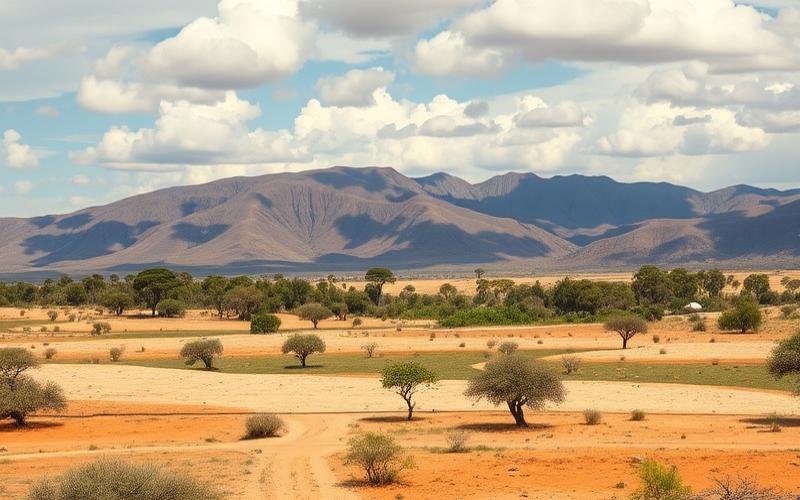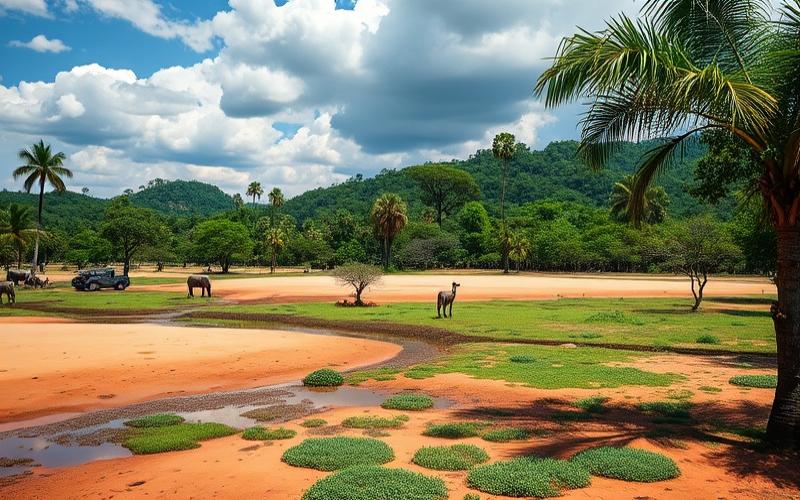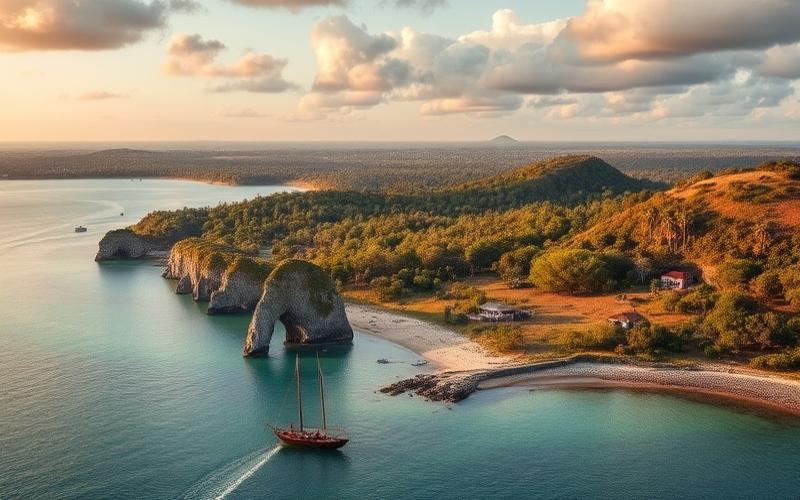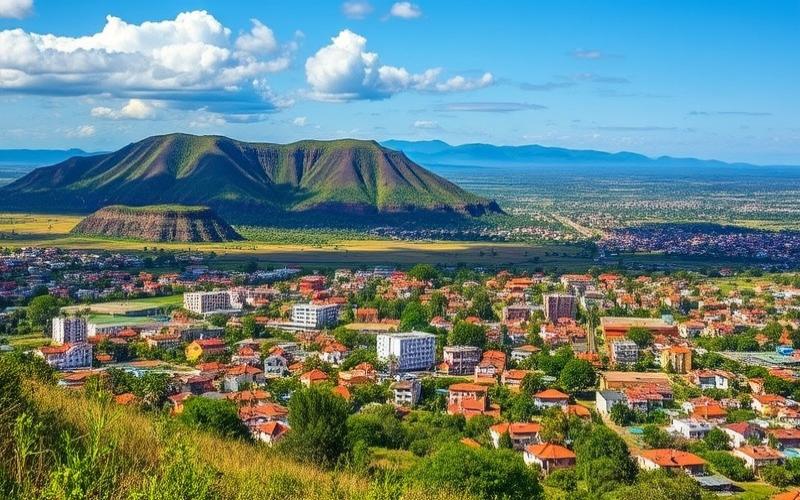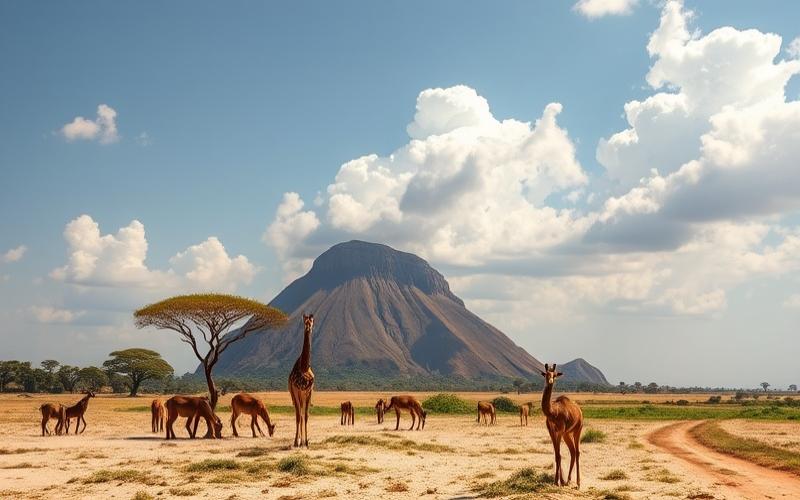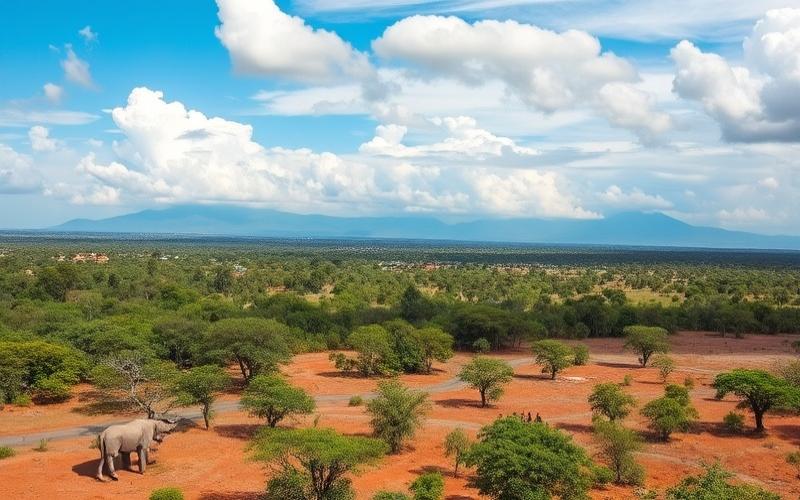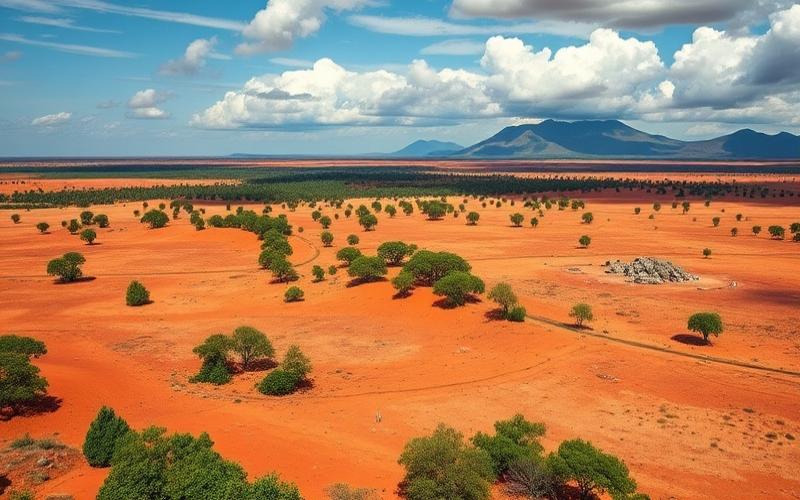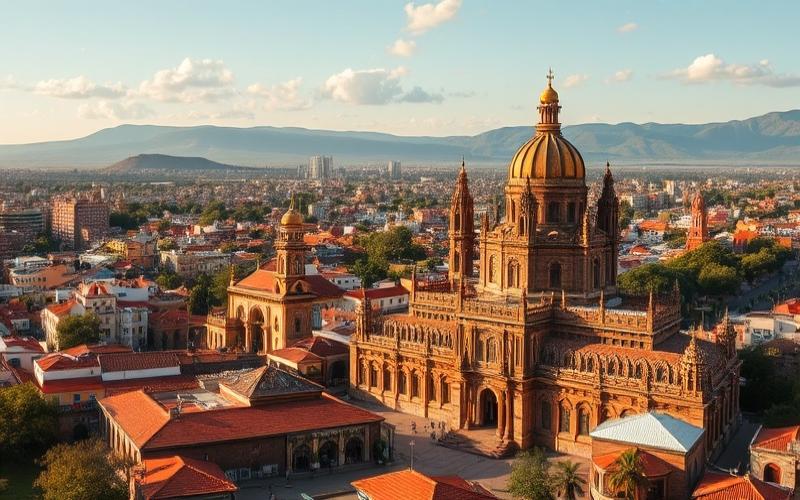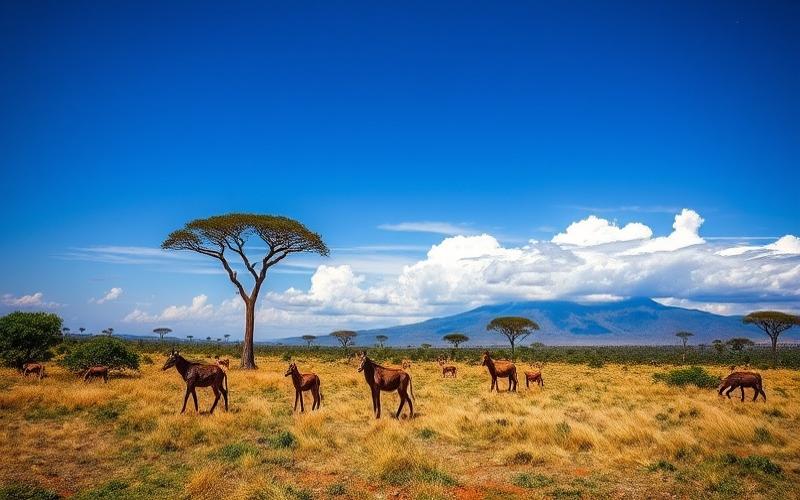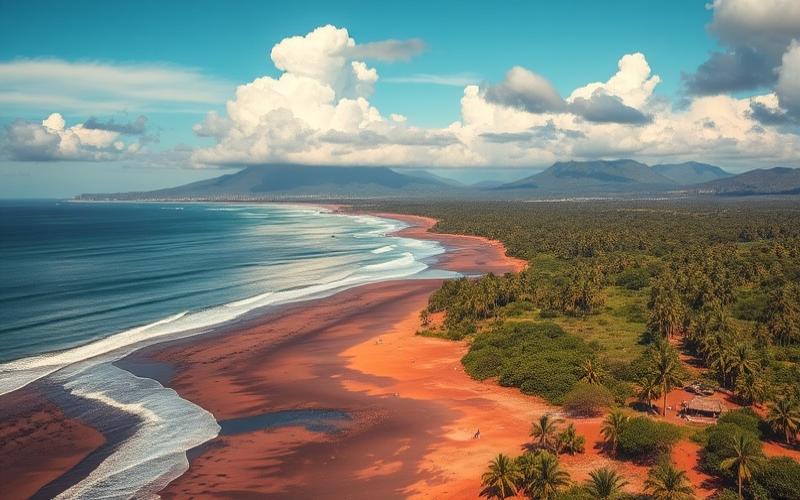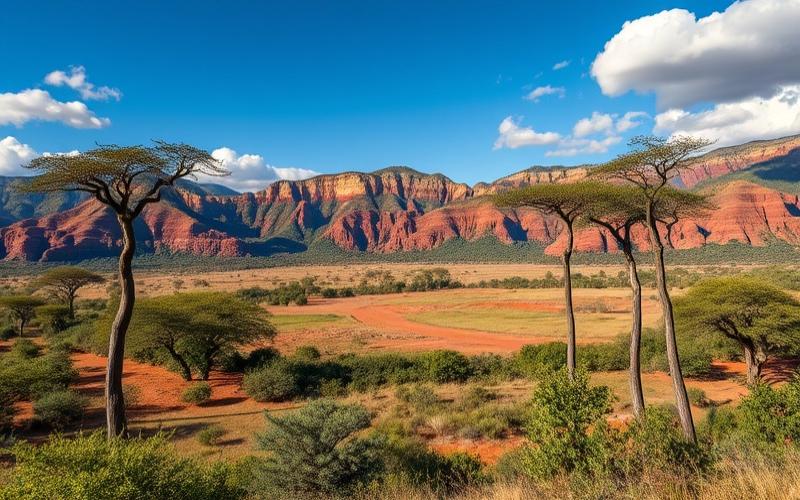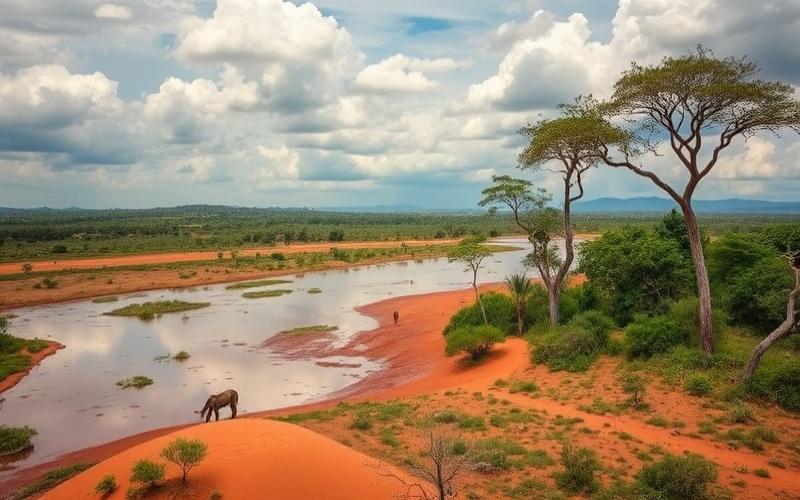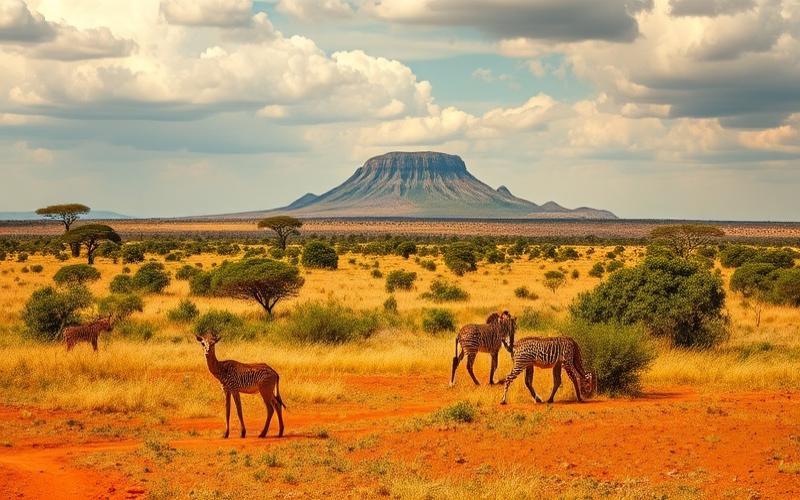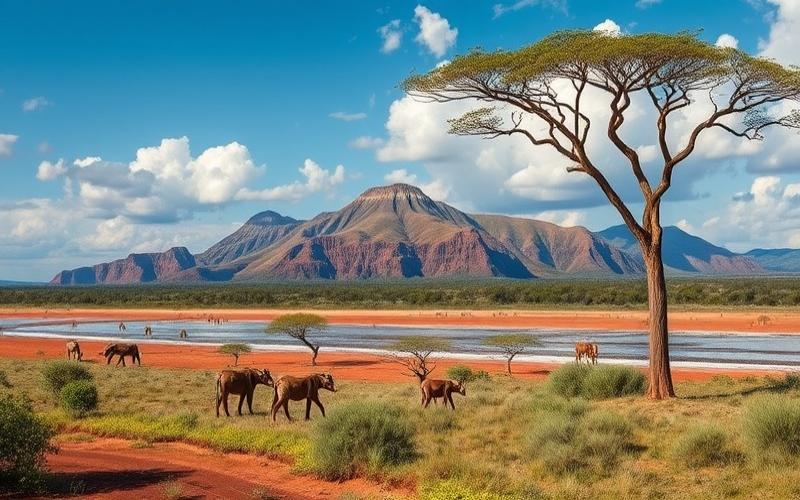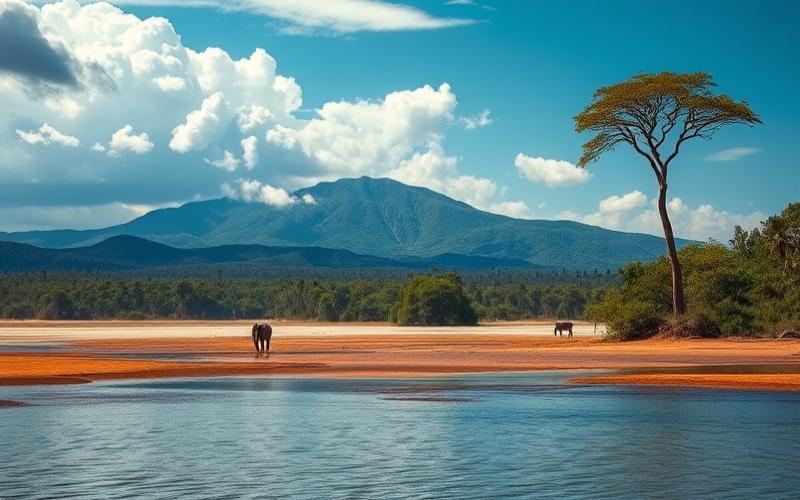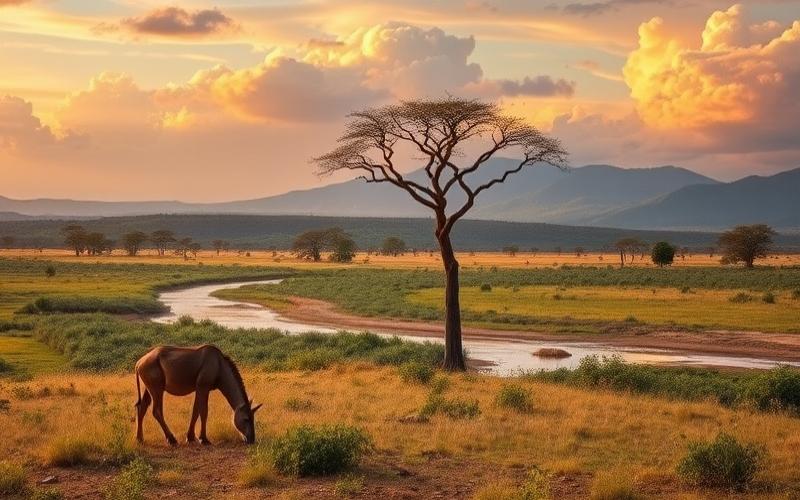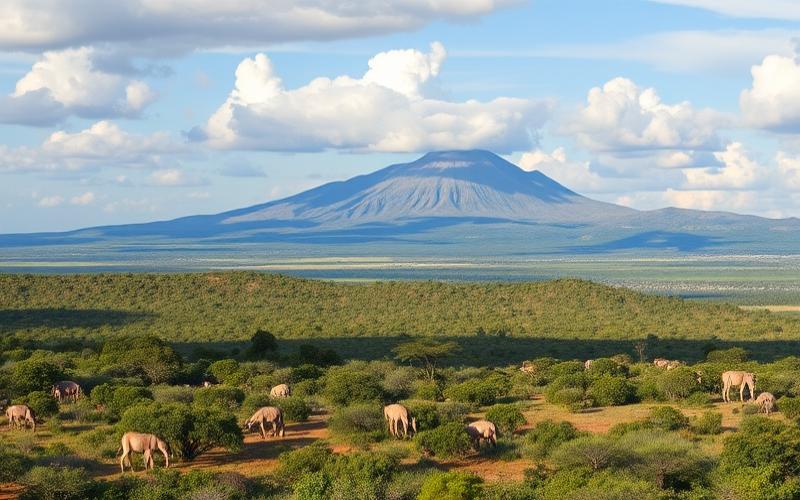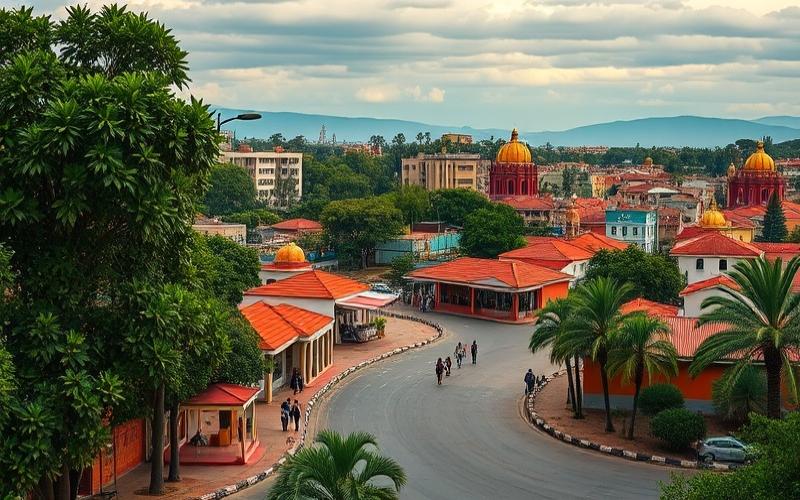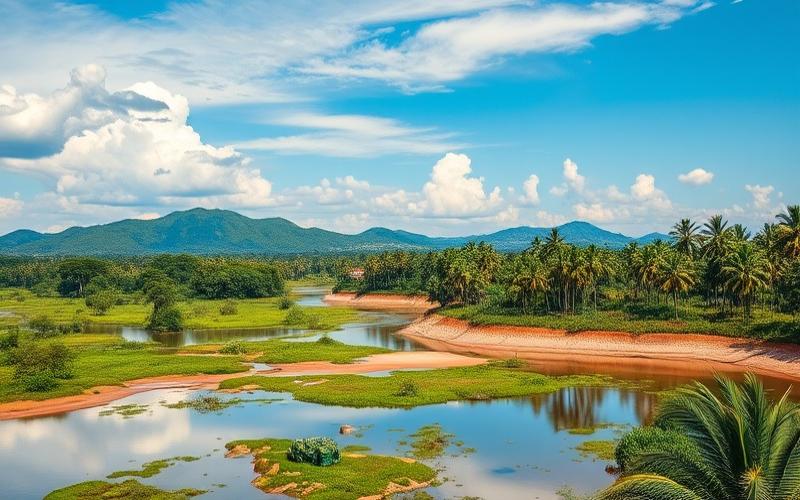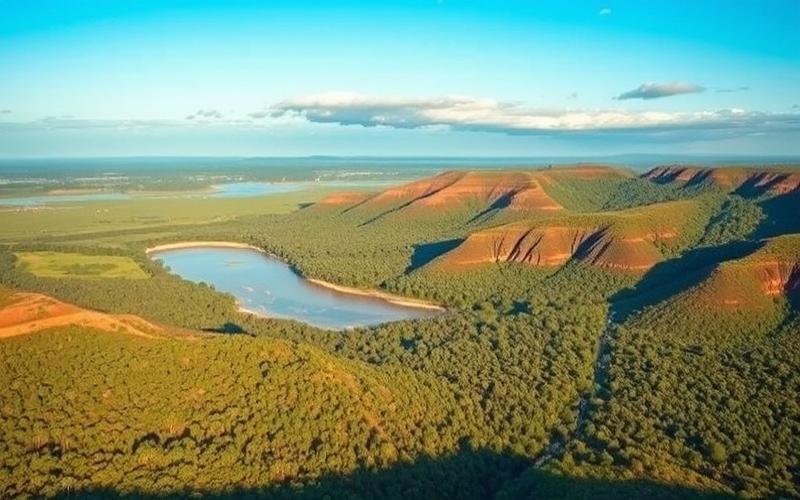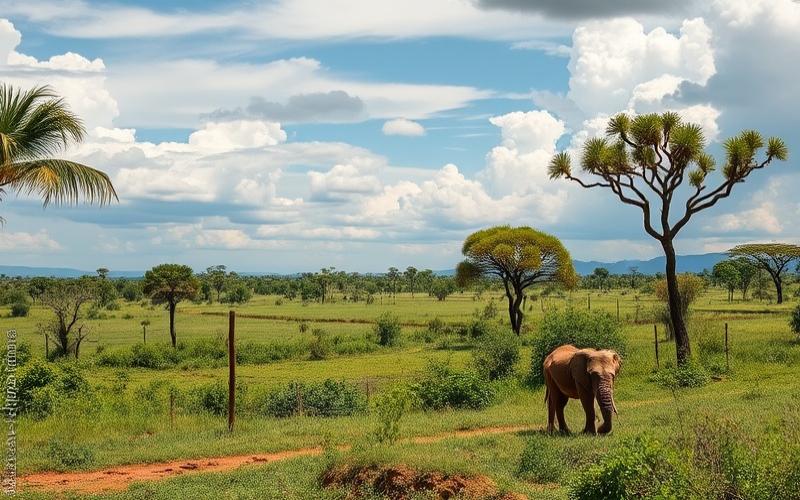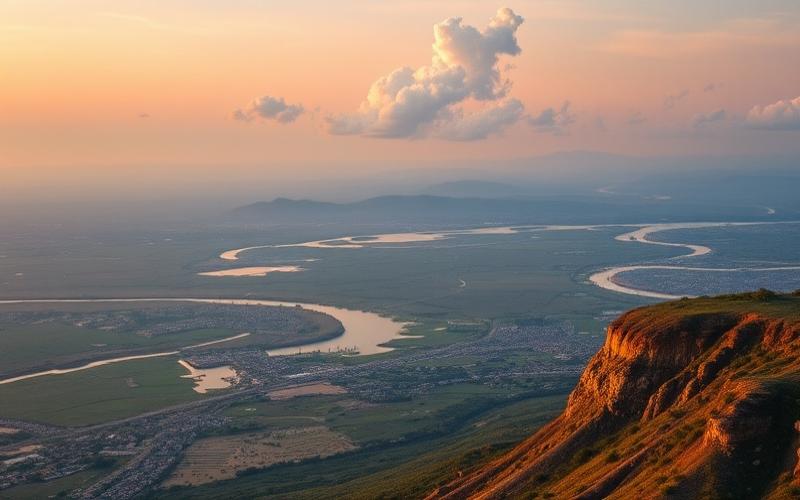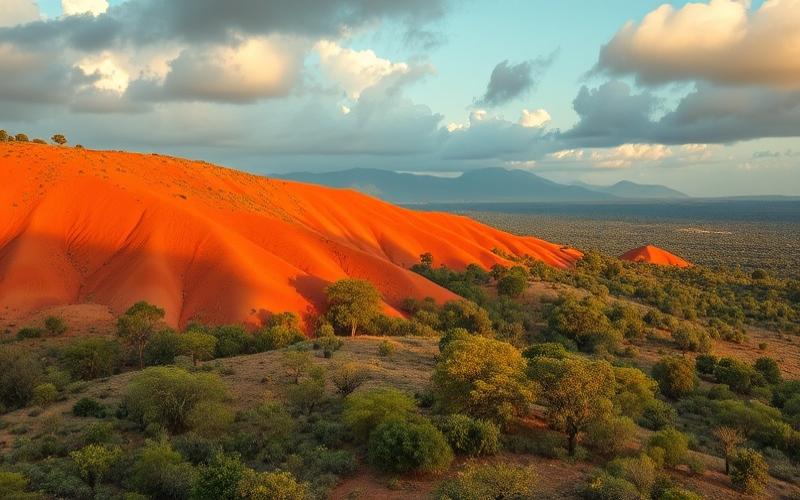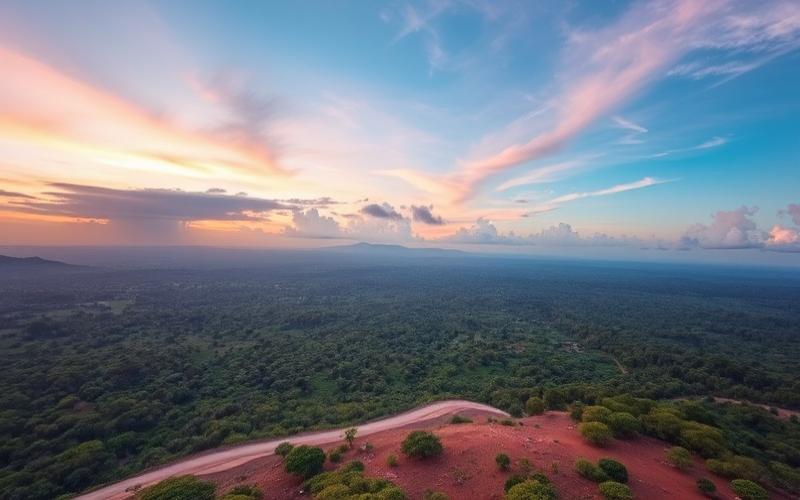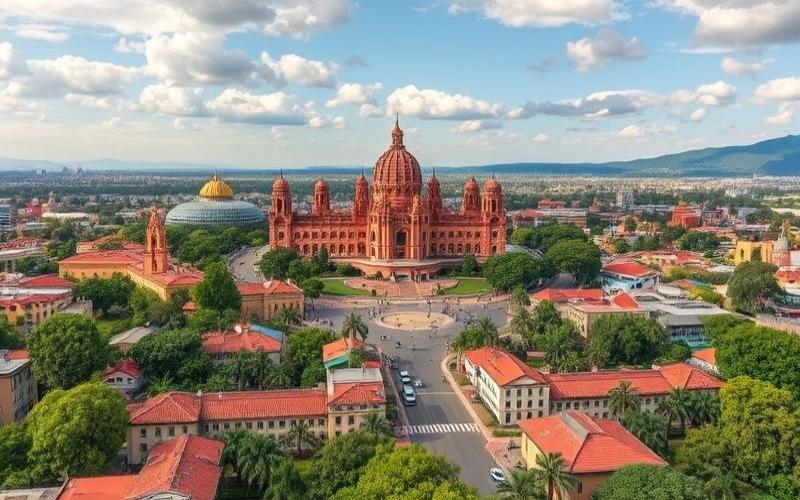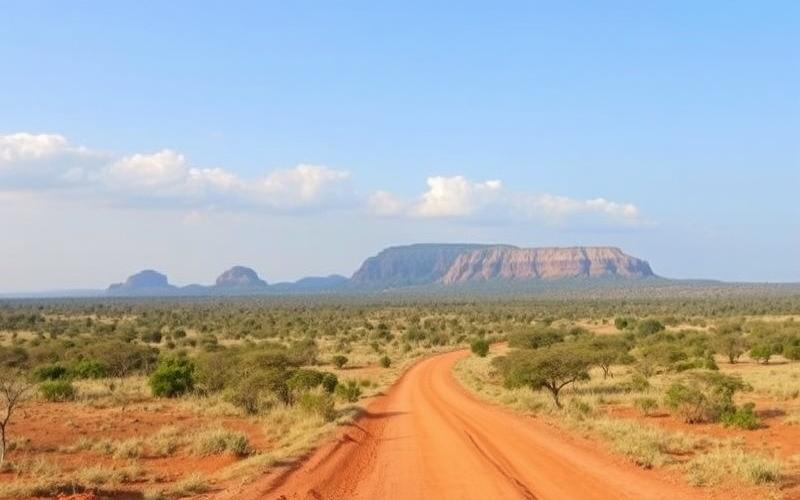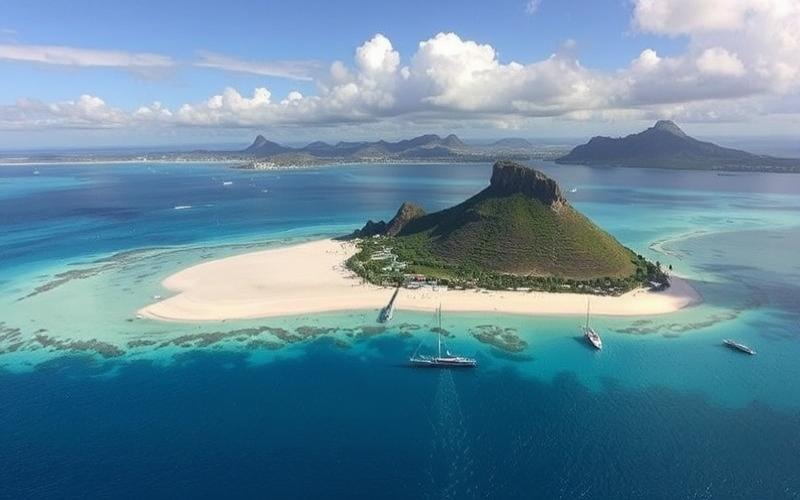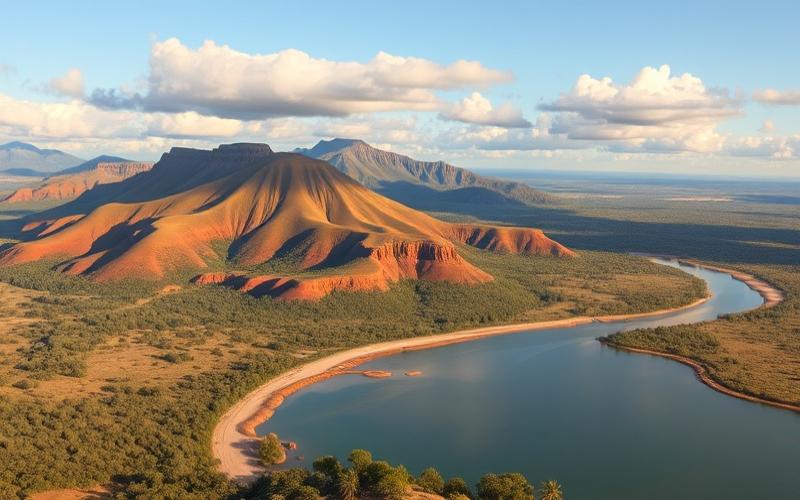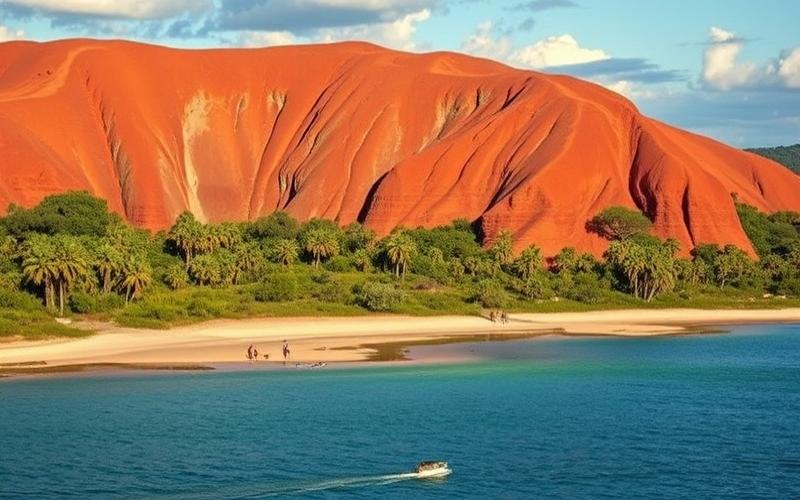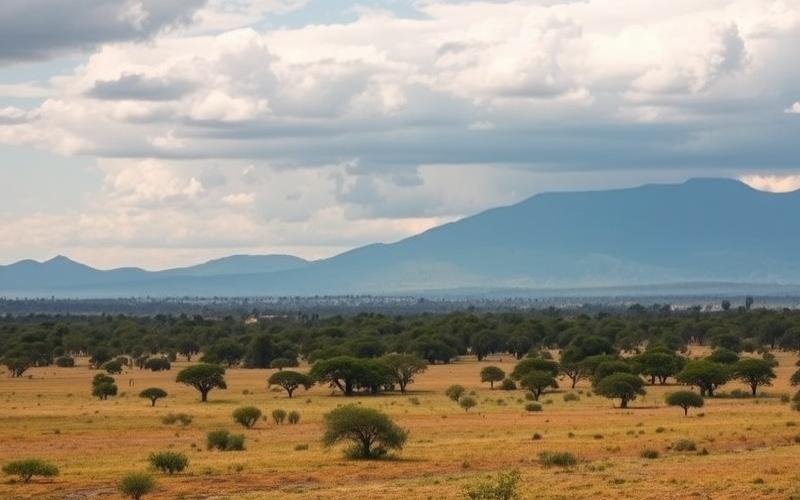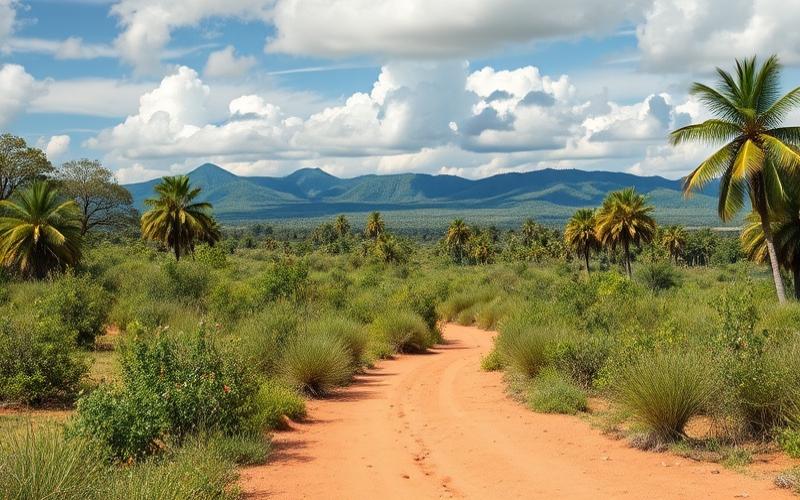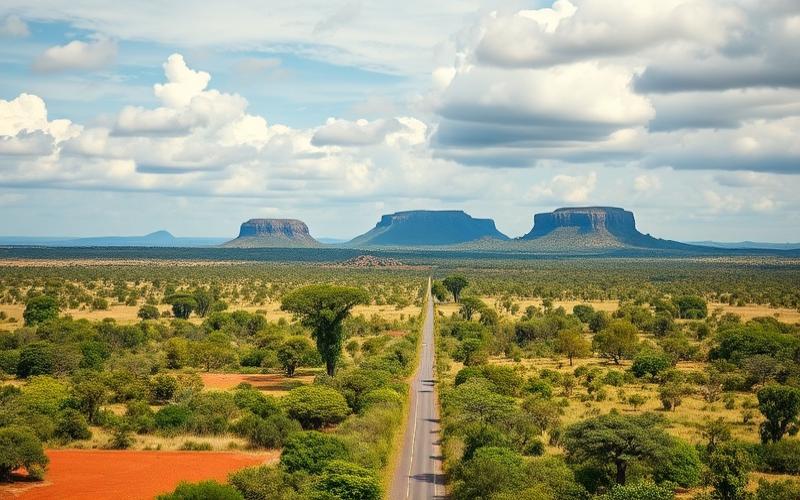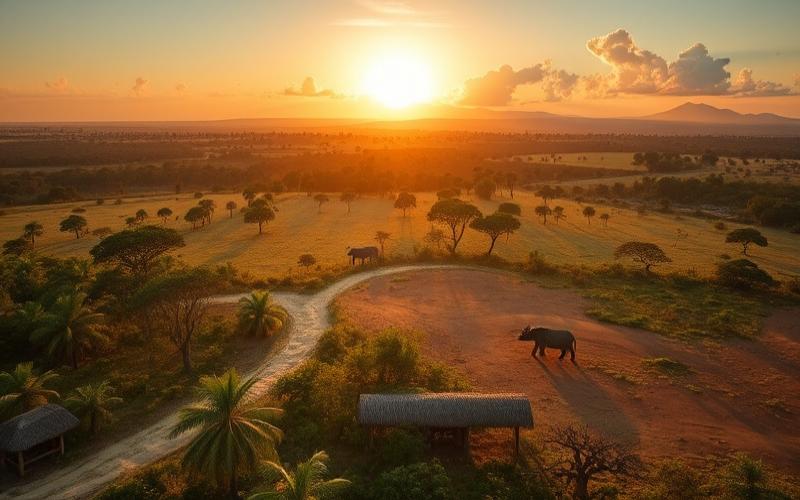
 Published on and written by Cyril Jarnias
Published on and written by Cyril Jarnias
The Rise of Industrial Real Estate in Madagascar
The rise of industrial real estate in Madagascar is increasingly attracting the attention of savvy investors, particularly due to strategic free zones that offer competitive tax and logistical advantages.
These zones, scattered across the island and encompassing various sectors, have become essential growth hubs for companies looking to establish themselves in this high-potential region.
By exploring the opportunities offered by free zones, this article reveals the key locations where industrial real estate is transforming into a powerful engine for the national economy, promising large-scale projects and attractive returns on investment.
Investing in Industrial Real Estate in Madagascar: An Opportunity to Seize
Investment in industrial real estate in Madagascar is experiencing unique momentum due to the development of free zones. Although the concept of free zones is mentioned in official texts, in practice, no specific zones have been created and companies are developing outside dedicated areas. This particular situation nevertheless offers interesting opportunities for investors.
The Filatex Group positions itself as a pioneer in establishing industrial free zones in Madagascar, offering a range of economic opportunities for both local and foreign investors. At Ankadimbahoaka ZFI, the group operates on over 165,000 m² of dedicated space with available premises for rent ranging from 600 m² to 1500 m².
The Androndrakely Free Zone, located south of Antananarivo, offers 5,000 m² of space to both foreign and local operators. This strategically positioned zone represents an attractive option for companies seeking to establish themselves in the capital.
In Tuléar, the first industrial free zone offers:
- An industrial zone of 13,000 m²
- 4 buildings ranging from 1,815 m² to 5,040 m²
- A fully secured space 7 days a week, 24 hours a day
- An ideal location 10 minutes from the port and airport
These free zones stimulate demand for industrial infrastructure, generating an increase in construction projects for warehouses, factories, and logistics centers. Foreign investors, attracted by the offered benefits, contribute to energizing the market and strengthen the value of industrial assets in these zones.
Among the companies operating in these zones are TCM (Terrassement et Construction de Madagascar) specializing in construction and development of real estate properties and industrial parks, as well as Teleperformance.
The Economic Development Board of Madagascar (EDBM) plays a central role in facilitating investments through its one-stop shop for free zones and enterprises. This structure simplifies administrative procedures for investors wishing to establish themselves in these zones.
Despite these opportunities, challenges persist in the development of these investment zones. The study of socioeconomic and legal impacts, particularly regarding land aspects, remains an important point of attention. The land reform initiated since 2005, based on the legal recognition of customary and local rights, must be considered in any investment project.
| Free Zone | Area | Characteristics | Location |
|---|---|---|---|
| Ankadimbahoaka ZFI | 165,000 m² | Premises from 600 to 1500 m² | Antananarivo |
| Androndrakely | 5,000 m² | For local and foreign operators | South of Antananarivo |
| ZFI Tuléar | 13,000 m² | 4 buildings, secured 24/7 | 10 min from port and airport |
Madagascar is also developing other types of zones dedicated to investment, particularly in the agricultural sector with agricultural investment zones (ZIA) and in the tertiary sector where free enterprises have developed outside traditional free zones.
Investment in industrial real estate in Madagascar represents a strategic opportunity for investors seeking to position themselves in a developing market offering significant competitive advantages.
Good to Know:
Investing in industrial real estate in Madagascar presents a promising opportunity, particularly due to the rise of free zones, such as those in Tananarive and Toamasina, which attract many international companies with tax incentives and competitive tariff advantages. The Malagasy government facilitates foreign investment by offering tax exemptions during the first years of operation, making the market more attractive. However, investors must be prepared to face challenges such as the complexity of administrative procedures and occasional political instability, but these obstacles can be overcome through rigorous due diligence and engaging local experts to navigate the bureaucratic system. By betting on this momentum, Madagascar positions itself as a strategic destination for those looking to capitalize on rapid economic growth in the industrial real estate sector, combining an advantageous geographic location and robust development potential.
Free Zones: Assets for Logistics Warehouses
Free zones in Madagascar constitute strategic hubs for the establishment and development of logistics warehouses thanks to a combination of tax, customs, commercial, and infrastructure advantages. They offer an attractive framework for logistics companies wishing to optimize their operational efficiency while reducing their costs.
Main Advantages for Logistics Warehouses in Malagasy Free Zones:
- Tax Exemptions: Companies benefit from significant relief on corporate tax, VAT, and certain customs duties.
- Facilitated access to international markets thanks to simplified administrative procedures for import/export.
- Modern infrastructure adapted to industrial and logistics needs (modular spaces, enhanced security, proximity to major transport routes).
- Qualified local workforce available in sufficient quantity.
- Environment conducive to foreign investment with dedicated administrative support.
| Advantage | Concrete Impact |
|---|---|
| Tax Incentives | Reduction in total operating cost |
| Simplified Customs | Decrease in transit times |
| Infrastructure | Productivity gain/optimized logistics |
| Location | Direct access to ports/airports/roadways |
Specific Examples of High-Performing Free Zones
- Filatex Industrial Free Zone (ZFI) – Ankadimbahoaka Antananarivo
- Over 17 hectares dedicated to industrial/logistics activities
- Modern premises totaling nearly 160,000 m²
- Indirect creation estimated at over 22,000 jobs by end of 2024
- Integrated services facilitating rapid deployment of operations
These industrial parks stand out due to the diversity and quality of the facilities offered as well as their professional management oriented towards supporting international commercial development.
Effects on Operational Efficiency and Cost Reduction
Integration into a free zone enables:
- A notable decrease in overall costs related to storage, transport, and administrative processing;
- Improvement in goods delivery times thanks to immediate proximity to port or airport infrastructure;
- The possibility to innovate through facilitated access to certain imported technologies or processes.
Challenges or Considerations When Establishing in These Zones
Despite these assets, some challenges remain:
- Specific regulatory constraints linked to the “free zone” status that must be mastered from the project setup;
- Partial dependence on local public policies that may evolve (tax/regulatory changes);
- Sometimes significant initial capital requirements to meet technical/logistical demands imposed by certain modern sites;
Therefore, it is advised for potential investors or logistics operators wishing to establish themselves in a Malagasy free zone:
- To thoroughly study the local legal framework,
- To plan for specialized support,
- And finally, to establish a detailed plan considering both the advantages and potential risks linked to this strategic location.
Good to Know:
Free zones in Madagascar, such as those in Antananarivo and Toamasina, offer considerable advantages for logistics warehouses thanks to attractive tax incentives, modern infrastructure, and optimal access to major maritime and road transport routes. These assets allow logistics companies to improve their operational efficiency while reducing their costs. Nevertheless, establishing a logistics warehouse in these zones can present challenges, particularly in terms of regulatory procedures and increased competition. To fully leverage the free zones, it is essential to thoroughly understand local requirements and plan accordingly, which requires an in-depth study of the regulatory framework and partnership with local experts.
Maximizing Returns in Malagasy Industrial Real Estate
The industrial real estate sector in Madagascar is experiencing significant development, particularly through free zones that constitute a strategic lever for investors. The Filatex Industrial Free Zone (ZFI) in Ankadimbahoaka Antananarivo represents an emblematic example of this momentum, extending over more than 17.2 hectares of built industrial premises.
Strategies for Optimizing Industrial Real Estate Returns
Strategic location is a determining factor in investment profitability. Free zones located near major urban centers like Antananarivo offer privileged access to essential infrastructure and qualified labor. The Filatex ZFI, the country’s first industrial free zone, benefits from an advantageous geographic position that facilitates logistics operations and reduces transport costs.
Planned development also represents an effective strategy. Groupe Filatex plans a first development phase in 2025, encompassing 110 industrial premises for a total built surface of 120,000 m². This progressive approach allows adapting supply to growing demand while optimizing investments.
| Free Zone Characteristics | Advantages for Investors |
|---|---|
| Customs Advantages | Reduction in import and export costs |
| Tax Incentives | Improvement in operational profitability |
| Dedicated Infrastructure | Optimization of industrial processes |
| Qualified Labor | Increased productivity and competitive costs |
| Administrative Support | Simplification of procedures and time savings |
Economic Impact and Future Prospects
Free zones in Madagascar play a crucial role in job creation and economic development. By the end of 2024, no less than 22,000 jobs were created indirectly by the free zones of Groupe Filatex. This positive momentum strengthens the country’s attractiveness for foreign investors and stimulates industrial real estate demand.
The growth potential remains considerable, with Groupe Filatex aspiring to become one of the main players in free zone development in Africa in the coming years. The company already offers a total of 160,000 m² of rental premises generating approximately 10,000 direct jobs.
Case Study: Androndrakely Free Zone
Located south of Antananarivo, the Androndrakely Free Zone perfectly illustrates the adaptation of real estate offerings to investor needs. With 5,000 m² of surface available for both foreign and local operators, this zone represents a strategic establishment opportunity for companies seeking to benefit from free regime advantages.
- Facilitated access to international markets thanks to preferential trade agreements
- Reduced operational costs thanks to tax and customs benefits
- Infrastructure adapted to specific industrial needs
- Integrated logistics support facilitating exports
Madagascar’s competitiveness on the global market largely relies on the advantageous cost of its labor. Historically, the average Malagasy salary was three times lower than the Mauritian salary, which constituted a major attraction factor for foreign investors, particularly Mauritians who established many free enterprises in the country.
The evolution of global demand for products exported from Madagascar directly influences the profitability of real estate investments in these zones. The textile, agri-food, and digital services sectors represent particularly promising opportunities, stimulating demand for adapted and modern industrial spaces.
Good to Know:
To maximize returns in industrial real estate in Madagascar, it is crucial to choose a strategic location, particularly in free zones that offer attractive tax incentives, such as profit tax exemptions for five years. These zones are equipped with modern infrastructure, such as quality roads and telecommunications services, thus facilitating logistics operations. For example, the textile company Filatex successfully leveraged the advantages offered by the Antananarivo free zone, optimizing its operational costs while meeting growing demand from European markets. Moreover, strong global demand for Malagasy products, such as textiles and agricultural products, reinforces the profitability of real estate investments in these zones, as it stimulates exports and, consequently, the growth of established companies.
Disclaimer: The information provided on this website is for informational purposes only and does not constitute financial, legal, or professional advice. We encourage you to consult qualified experts before making any investment, real estate, or expatriation decisions. Although we strive to maintain up-to-date and accurate information, we do not guarantee the completeness, accuracy, or timeliness of the proposed content. As investment and expatriation involve risks, we disclaim any liability for potential losses or damages arising from the use of this site. Your use of this site confirms your acceptance of these terms and your understanding of the associated risks.

